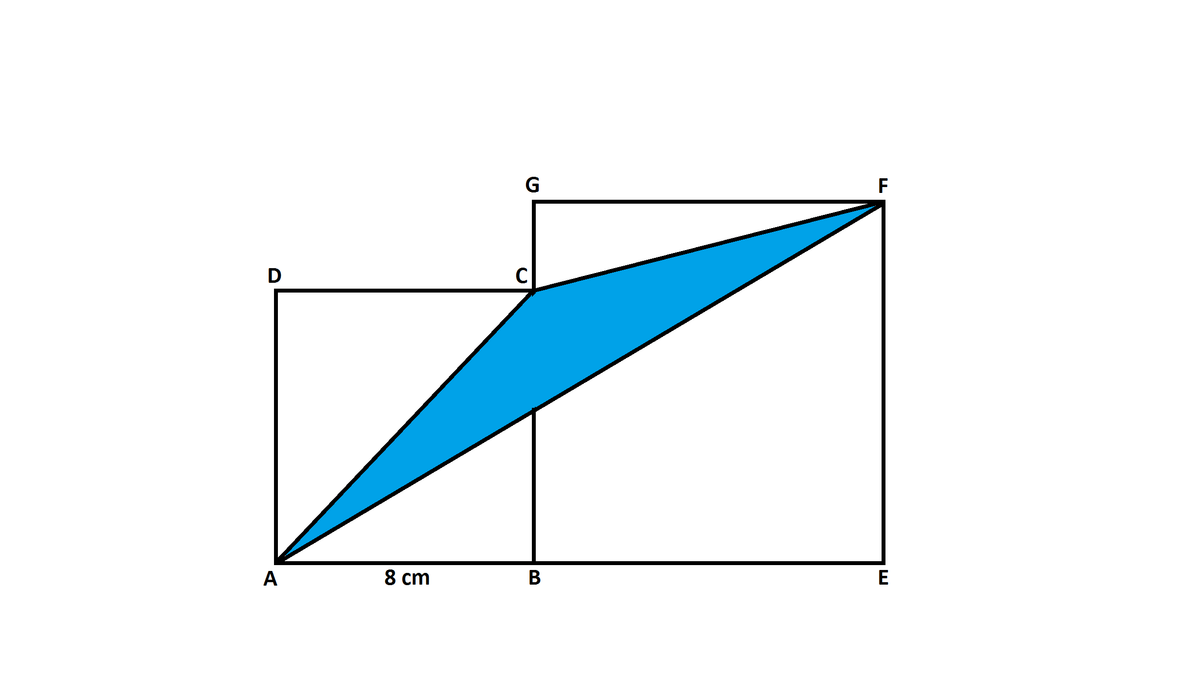Only one of two squares is known its length

Based from figure above, and are two squares with point is lying on side , point is lying on side , , and .
Find in .
Note that
-
denotes the length of side ,
-
denotes the area of triangle , and
-
the diagram isn't drawn to scale.
The answer is 32.
This section requires Javascript.
You are seeing this because something didn't load right. We suggest you, (a) try
refreshing the page, (b) enabling javascript if it is disabled on your browser and,
finally, (c)
loading the
non-javascript version of this page
. We're sorry about the hassle.
Let ∣ BE ∣ = x cm
Then [ △ ACF ] = [ □ ABCD ] + [ □ BEFG ] − ( [ △ ADC ] + [ △ CFG ] + [ △ AEF ] ) = [ □ ABCD ] + [ □ BEFG ] − [ △ ADC ] − [ △ CFG ] − [ △ AEF ] = ∣ AB ∣ 2 + ∣ BE ∣ 2 − 2 ∣ CD ∣ . ∣ DA ∣ − 2 ∣ FG ∣ . ∣ GC ∣ − 2 ∣ AE ∣ . ∣ EF ∣ = ( 8 cm ) 2 + ( x cm ) 2 − 2 8 cm . 8 cm − 2 x cm . ( x − 8 ) cm − 2 ( x + 8 ) cm . x cm = 6 4 cm 2 + x 2 cm 2 − 3 2 cm 2 − 2 x 2 cm 2 + 4 x cm 2 − 2 x 2 cm 2 − 4 x cm 2 = 3 2 cm 2 + x 2 cm 2 − x 2 cm 2 = 3 2 cm 2